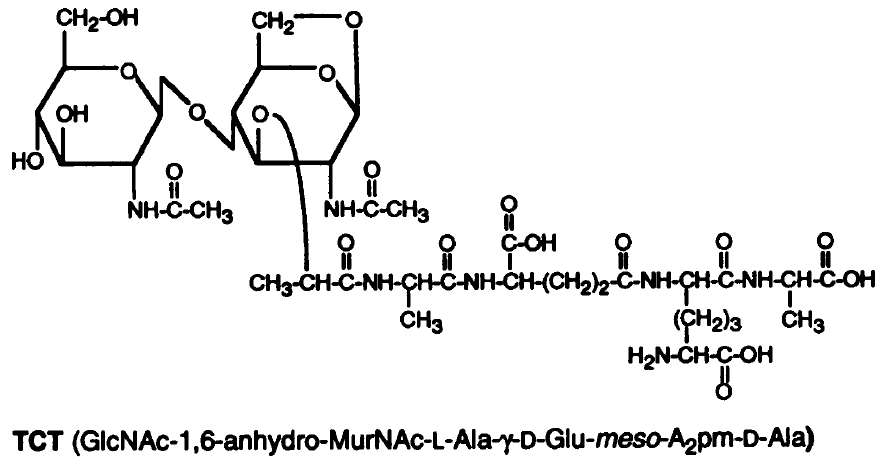|
Tracheal Cytotoxin
Tracheal cytotoxin (TCT) is a 921 dalton glycopeptide released by ''Bordetella pertussis'', ''Vibrio fischeri'' (as a symbiosis chemical), and ''Neisseria gonorrhoeae'' (among other peptidoglycan-derived cytotoxins it produces). It is a soluble piece of peptidoglycan (PGN) found in the cell wall of all gram-negative bacteria, but only some bacteria species release TCT due to inability to recycle this piece of anhydromuropeptide. History In 1980, it was discovered that ''B. pertussis'' could attach to hamster tracheal epithelial (HTE) cells, and also, that the supernatant from the cultured bacterium could disrupt the cell cycle of uninfected cells. This prompted the scientists W. E. Goldman, D. G. Klapper, and J. B. Baseman to isolate and characterize a novel substance from ''B. pertussis'' supernatant. The novel disaccharide tetrapeptide that they had purified showed toxicity for HTE cells and tracheal ring cultures. Subsequently, they named the newly sequestered molecule trachea ... [...More Info...] [...Related Items...] OR: [Wikipedia] [Google] [Baidu] |
